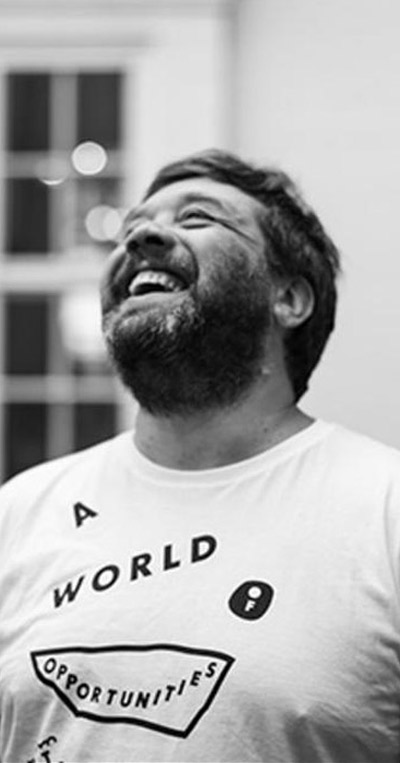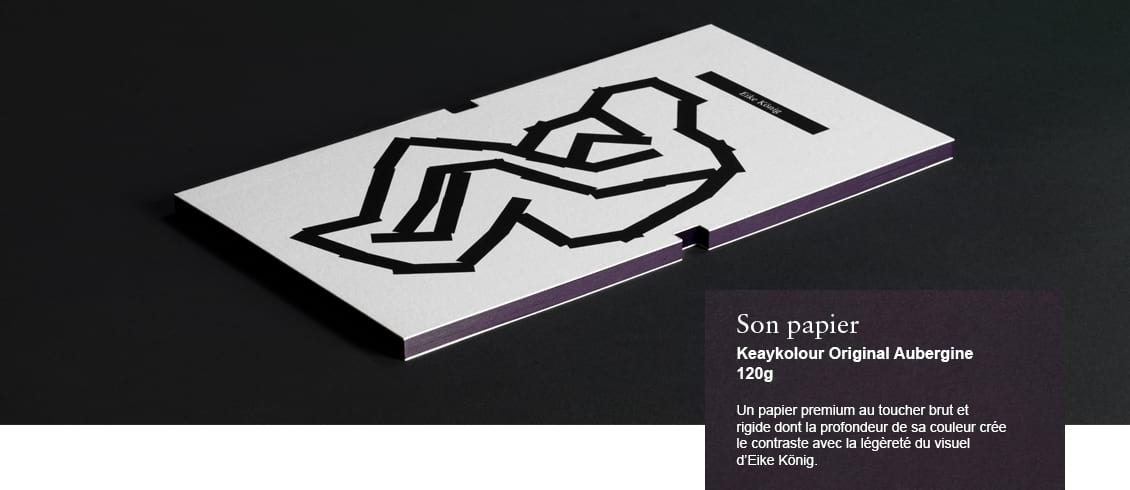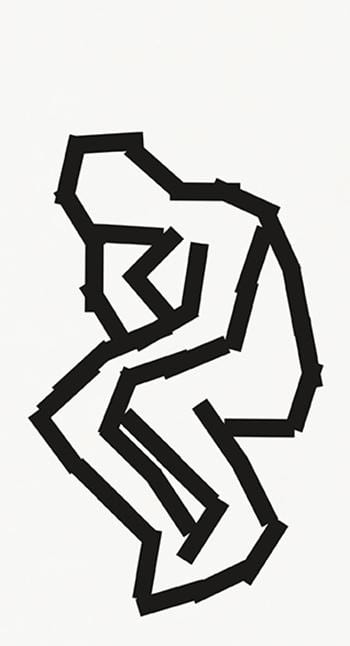
© Cat Garcia
Eike König
Germany
"Deciding on a paper is as important as choosing a typeface or a color."
Eike König was the art director of Logic record label before opening his design agency in 1994 in Frankfurt, Germany, under the name of EIKES GRAFISCHER HORT (“Eike’s Graphic Kindergarten”), which he conceived first and foremost as a creative playground. HORT soon became a household name in the music industry, designing record sleeves for different independent and major labels. Today it is a Berlin based studio specializing in developing visual languages for brands large and small. Disney, Nike and Microsoft are among the many acclaimed clients. Hort also interacts with cultural institutions, among them the Bauhaus Dessau Foundation for which they designed a new identity. Eike has led numerous creative workshops locally and internationally and teaches graphic design and illustration two days a week at the Offenbach University of Arts, Germany.
At Hort, Eike König’s Berlin office, there are as many bikes as computers. At least a dozen bicycles are parked along the bookshelves or leaning against tables and desks. In the back, there is a large workshop – but, oddly enough for an agency that caters to prestigious clients, there is no conference room. The studio is a busy place: everywhere people are doing things. Some are building models or making collages. Others are sketching on paper, while others still are drawing on electronic tablets. “This is an institution devoted to making ideas come to life,” says König. Designers, interns, guests, visiting students, and clients are mingling in an atmosphere of studious camaraderie. “We are all team players here,” he adds. “We share the same ideal, even though every single one of us has a strong personality.”
König’s design philosophy is based on experimentation. His own approach is more analog than digital: his relationship with design is physical. He thinks best when he is immersed in action. “My favorite form of meditation is to go into the print shop and mess around with paper and ink,” he says. “For me, printing a poster by hand is the equivalent of doing yoga.” About two-thirds of HORT’s design solutions involve paper one way or another – paper as a surface, as a medium, as a source of inspiration, or as a visual metaphor.
HORT’s main clients are international brands that are looking for breakthrough communication strategies. They trust König’s unconventional approach to problem solving and are willing to take risks along with him. Only one thing is sure: HORT’s answers to their problem – posters, videos, books, brochures, or interactive installations – will be unexpected, clever, and contemporary. “I tell my designers: Surprise me!” says König. “It’s my motivation for going to work every morning. I can’t wait to see what new ideas we are going to think up.”
Véronique Vienne

Interview
Véronique Vienne:
Is paper still the source of surprising design solutions today?
EK:
While working in front of computers fosters isolation, working with paper invites experimentation, participation and socialization. To begin with, when you sketch your ideas on paper, or when you build a model or a prototype using paper or cardboard, people always stop by to look at what you are doing. They give you advice, make comments, ask questions – and before you know it, new ideas are popping up right and left.
Work involving paper requires many tryouts to achieve the desired result – that’s a good thing. Paper is not easy to control but that’s what makes it exciting. Accidents can look very good. You have to accept them as part of the creative process.
Now, with my team at HORT, we have a lot of discussions as to what paper we are going to use for a given project. We talk about the fact that deciding on a paper is the same kind of decision as choosing a typeface or a color. Needless to say, younger people have a different connection to paper than I do. While for me paper is part of the action, for them it is part of a later decision. However, I encourage everyone in my studio to be aware of the importance of paper – and how we can integrate it not only in our design process but also in our design solutions.
Even so, at some point of the process, computers take over, don’t they?
Computers are great tools, but there is more to designing than sitting down, adjusting your earphones, and pushing a mouse around. At some point, you need to bring the material world back into the process. What bothers me most about computers is the fact that there is no limit to what you can do with them. There is no boundary to your work either. The physical “moment” is missing. With work on paper, I can walk away from it, turn around, and see the whole scope of it.
Your design solutions have a three-dimensional quality, even when they are simply printed. Is it premeditated?
I come from the collage culture: it’s all about assembling, connecting, glueing, and cutting different textures, most of them imported from old frames of reference into new ones. And while I do that, I come up with a lot of new ideas. People in the office do the same: they use collages to discover new things, whether by accident or by deliberate research. Sometimes I do digital collages, tinkering with scanned files of recycled images.
 Title - A very bad copy of a famous sculpture
Title - A very bad copy of a famous sculpture
Designer - Eike König
Date published - 2015
How did you learn to integrate paper in your work?
The first thing I had to learn in order to become a designer was to coordinate my brain with my hand, and my hand with paper. Soon, the only way I could think and visualize my thoughts was with a piece of paper in front of me. I was lucky, my first job was art director for a music label, designing record sleeves – and record sleeves are something you hold in your hand while listening to music.
Wow, I never thought of it this way. Are you saying that the tactile contact with paper was associated with the listening pleasure?
Yes it was. At that time I was able to choose the paper for the inside as well as the outside of the sleeves. I could do spot varnishes. I could choose the printing technique. I could do cutouts and embossing. And all along, I knew that what I was designing would end up in someone’s hand. That tangible, handmade sense of touch was very important back then, and is still very present in my work today.
But paper is not just texture. For me it’s also about temperature: the coolness of the paper, or its warmth, whether to the touch or to the eye.
Weight is critical too. For the visual identity of Jazzanova, the Berlin “nu-jazz” music group, we did a 3‑D collage logo using a special paper that comes in different weights. The color range of that particular paper helped us define the graphic language of Jazzanova. We printed all their collateral material on that same paper. That’s what I really like. Paper! This is the world I work in.
I noticed, on the wall in your office, a poster that reads I LIKE IT. WHAT IS IT?* Does it relate to your philosophy?
It does. It’s part of HORT’s playground mentality. I sometimes do workshops with kids. Unlike most designers, who think too much, kids start working instantly, the minute they sit down. They are much more spontaneous and come up with genuine surprises. With my team, we talk a lot about that. Sometimes I wish we could all get rid of our education. A lot of good ideas would arise if we could access the creative source within ourselves directly, like children do. HORT is about work and play, with the emphasis on play.
